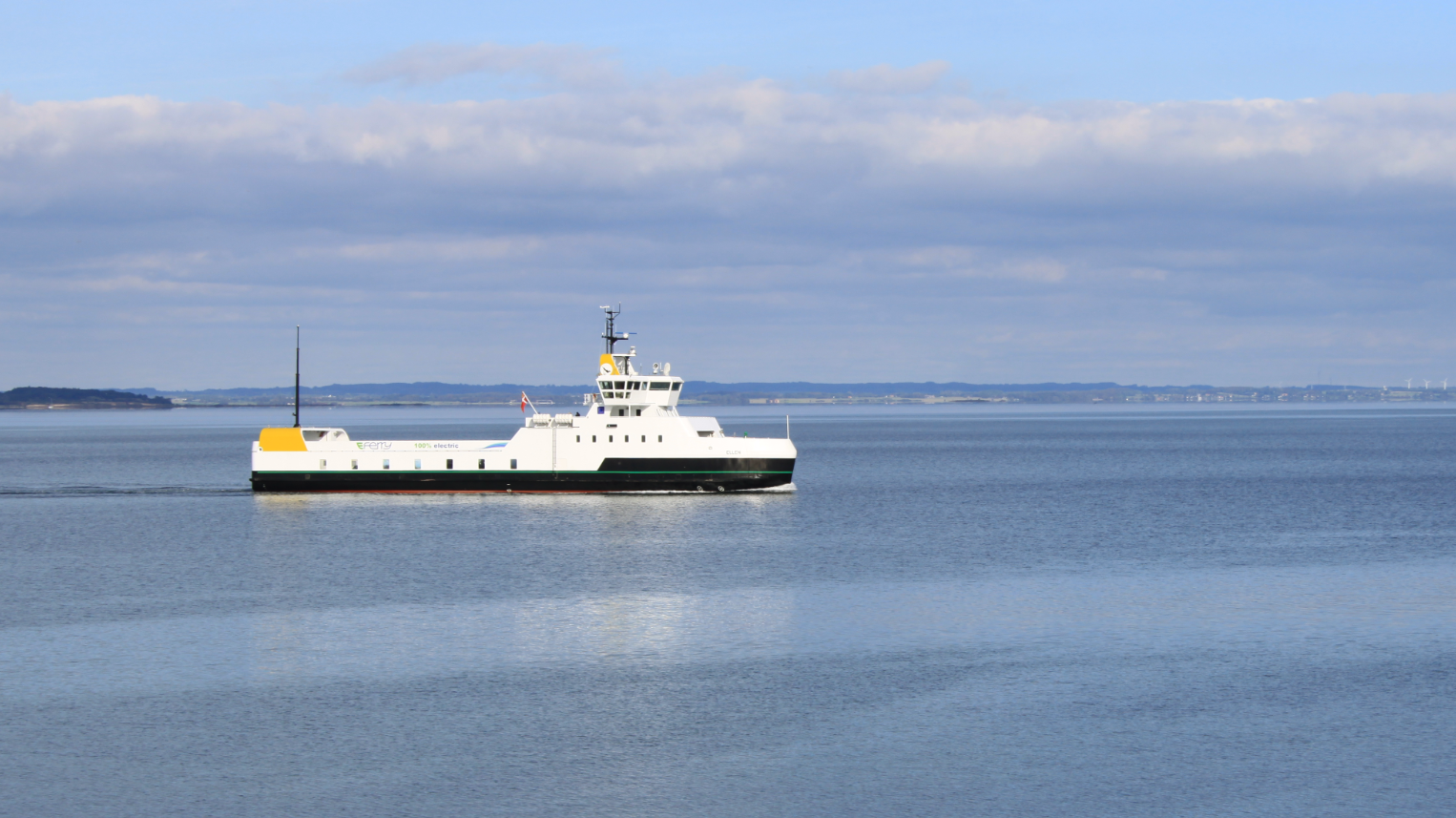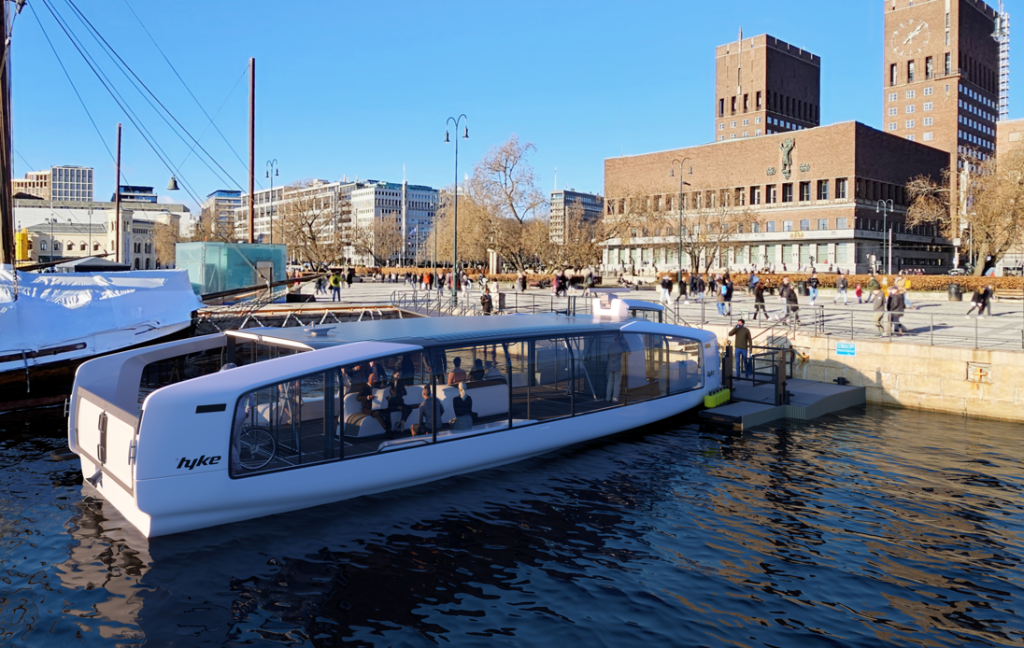
From London to Paris to Hong Kong, a common feature of many of the world’s most populated and economically successful cities is that they are water based, meaning electric ferries could play a role in accelerating national net-zero targets, with the added benefits of reducing congestion and providing passengers with a smoother ride.
With shipping recently included in the EU’s Emissions Trading System under the EU’s ‘Fit for 55‘ programme, other countries may soon find themselves looking to Norway and other Scandinavian countries as pioneers in ferry electrification.
According to a 2022 report from Siemens Energy, Germany, Greece, Italy and the UK also have large and untapped potential to electrify their ferry fleets, accounting for more than 35% of European ferry emissions between them.
The report finds that by investing in existing technologies, the electrification of these countries’ ferry fleets would avoid as much as 800,000 tonnes (t) of CO2 per year, amounting to a 50% decrease in ferry-related emissions in these countries. Currently in the EU, ferries represent approximately 7% of EU shipping emissions, meaning they are responsible for around 0.2% of total EU emissions.
!function(){“use strict”;window.addEventListener(“message”,(function(a){if(void 0!==a.data[“datawrapper-height”]){var e=document.querySelectorAll(“iframe”);for(var t in a.data[“datawrapper-height”])for(var r=0;r<e.length;r++)if(e[r].contentWindow===a.source){var i=a.data["datawrapper-height"][t]+"px";e[r].style.height=i}}}))}();Overcoming key challenges
It is far easier to decarbonise ferries, which operate on shorter routes, than the rest of the shipping sector, which accounts for 3% of global greenhouse gas (GHG) emissions. Nevertheless, key challenges remain. These include having to wait for the natural end of life of existing ferries before switching to electric alternatives, balancing the battery’s size with the vessel’s weight and establishing sufficient charging infrastructure at ports.
In addition, electrifying ferries requires sufficient access to clean electricity as well as a sufficiently strong grid. According to one report from Swedish automation company ABB, “harbors and quays have typically been connected to relatively weak electrical grids. This is particularly evident on islands”, where ferries are most commonly situated.
How well do you really know your competitors?
Access the most comprehensive Company Profiles on the market, powered by GlobalData. Save hours of research. Gain competitive edge.

Thank you!
Your download email will arrive shortly
Not ready to buy yet? Download a free sample
We are confident about the unique quality of our Company Profiles. However, we want you to make the most beneficial decision for your business, so we offer a free sample that you can download by submitting the below form
By GlobalDataA handful of electric ferry manufacturers, largely in Norway but also in other Scandinavian countries like Denmark, are innovating to overcome these challenges. In 2015, Norwegian company Norled brought the world’s first electric car and passenger ferry, Ampere, into service. Since then, others have followed.
In Denmark, for example, the e-ferry Ellen, launched in 2020, was the first electric ferry to complete a record-breaking distance of 50 nautical miles between charges. Sailing in southern Denmark from the island of Ærø (Aeroe), the e-ferry is powered by wind turbines on the island with undersea cables to the mainland as a backup source of power.
The MS Medstraum, operated by Kolombus, which administers public transport for Rogaland, a country in western Norway, is the world’s first high-speed electric ferry operating at 23 knots (42.6km per hour) for a full hour on battery power alone. It is expected to cut CO2 emissions by 1,500t each year.
Norwegian ferry manufacturer Hyke is pioneering the concept of an autonomous vessel, and has established an innovative means of charging its batteries by using an integrated system whereby floating jetties enable vessels to charge without requiring a planning permit.

Founded in 2018, Hyke has a maximum speed of 15 knots, and with just one ferry currently operational, is already planning its expansion to other countries. It was recently commissioned by several Parisian municipalities to operate one of its ferries during the 2024 Summer Olympics in Paris, France.
!function(){“use strict”;window.addEventListener(“message”,(function(a){if(void 0!==a.data[“datawrapper-height”]){var e=document.querySelectorAll(“iframe”);for(var t in a.data[“datawrapper-height”])for(var r=0;r<e.length;r++)if(e[r].contentWindow===a.source){var i=a.data["datawrapper-height"][t]+"px";e[r].style.height=i}}}))}();Despite the widespread emissions reduction potential of electrifying ferries, there is “no competition today” between Norway and other countries, including the rest of Scandinavia, says Eli Kristin Sjøen, boat operations manager at Kolombus. “Norway is ahead of every other country in developing and using electric boats,” she says, due to its target of reducing GHG emissions by 50–55% by 2030. “We have to do something about all transportation, and high-speed vessels are one of the most efficient ways to do that,” she adds.
“Norwegians are very fond of new technology,” says Hyke CEO Bjørn Utgård, when asked how Norway came to be a front-runner in electric ferries.
Indeed, with a virtually 100% renewable power mix, Norway is widely considered a poster child for clean tech innovation. According to Halfdan Abrahamsen, media and information manager for the e-ferry Ellen: “If you can’t supply an electric ferry with green energy, then don’t bother building an electric ferry in the first place.” He estimates that a country “probably needs to have around 20% of [its] grid to be green before it makes sense”.
Thanks to the country’s green tax incentives, which have been in place since the 1990s, Norway boasts the most developed electric vehicle (EV) market in the world; in 2022, eight out of every ten vehicles sold in Norway was an EV.
!function(){“use strict”;window.addEventListener(“message”,(function(a){if(void 0!==a.data[“datawrapper-height”]){var e=document.querySelectorAll(“iframe”);for(var t in a.data[“datawrapper-height”])for(var r=0;r<e.length;r++)if(e[r].contentWindow===a.source){var i=a.data["datawrapper-height"][t]+"px";e[r].style.height=i}}}))}();Although the aim is to electrify all cars, we need to move towards “shared mobility”, where people spread journeys across different transport types including ferries, as opposed to just increasing the numbers of cars in cities, says Utgård. Existing ferry design needs to be made “scalable and cheaper”, he adds.
Electric ferries: the importance of public procurement
EU funding has been crucial to the development of these electric ferries – a product of the TrAM project, MS Medstraum was funded by the EU’s Horizon 2020 research and innovation programme, which provided almost €80bn ($85bn) to European R&D projects between 2014 and 2020. Along with Iceland, Norway became the first non-EU country to become associated with Horizon 2020 in 2014.
Public procurement has also been “super important” in Norway though, says Utgård. In Norway, ferries are operated as a public service, and the responsibility of purchasing ferry tenders is shared by two state entities – the Norwegian Public Road Administration and Norwegian counties. Norway’s numerous fjord crossings are a key part of its road network and it is often cheaper to invest in boats than bridges. Government officials widely consider electric ferries to be the “best available technology” for economic as well as environmental reasons, says Utgård.
“More than 70% of Norwegian ferries would benefit economically from being replaced by either fully electric (47%) or hybrid electric (24%) vessels,” concluded a 2015 study conducted by Siemens Energy and the non-profit Bellona. The study found that the potential for operational cost savings outweighed the costs of replacing older diesels models as well as upgrading the grid in remote areas.
That same year, following “considerable political debate and involvement from environmental NGOs, maritime clusters and industry lobby groups”, the Norwegian Parliament ruled that all new ferry tenders must require low-emission technologies where possible.
According to a 2021 report from the Energy Research & Social Science journal, this move was in part prompted by the 2014 oil price crash, “which inflicted empty order books on a maritime sector overly dependent on orders from the petroleum sector”. When orders for boats from the offshore sector fell sharply after the crash, the “industry had to undergo a green industrial restructuring”, creating an “opportunity” for building new capacity with battery-electrical ferries.
Trine Heinemann, an academic and researcher who used to work as a project coordinator on E-Ferry, suggests that, despite the rise in electricity prices, a similar phenomenon could occur in light of the war in Ukraine, where operators may be incentivised to “change to a different fuel” beyond oil that is not natural gas, “because it might be getting too expensive to otherwise operate the ferries”.
[Keep up with Energy Monitor: Subscribe to our weekly newsletter]
On the flip side, one of the key reasons Norway has steamed ahead of its Scandinavian neighbours in terms of clean tech is the fact that it is buoyed by bumper profits from its huge oil and gas export industry. Of the profits from the nation’s state-owned oil and gas companies, 3% are pumped into its sovereign wealth fund – the largest in the world – each year.
Utgård says the sector is a “poison pill”, because it generates the revenue to “build things and drive change” by reinforcing the status quo.







